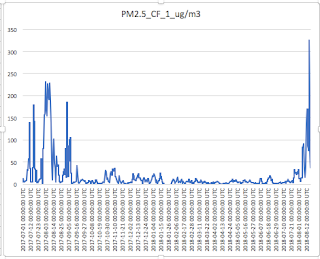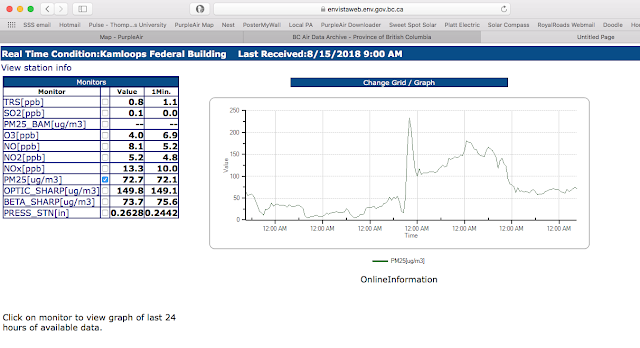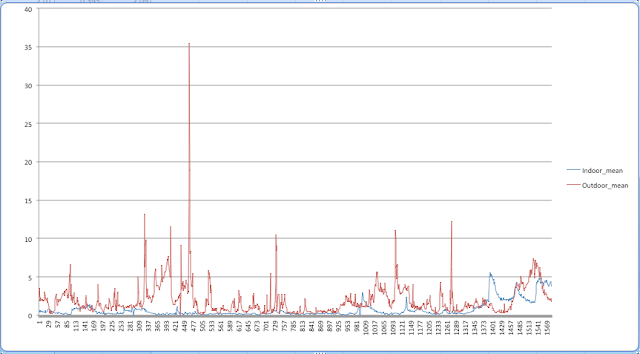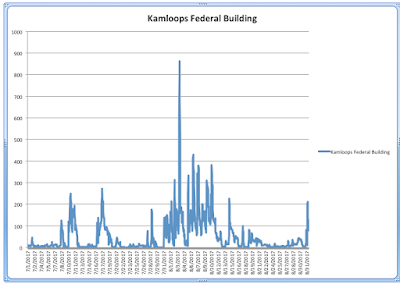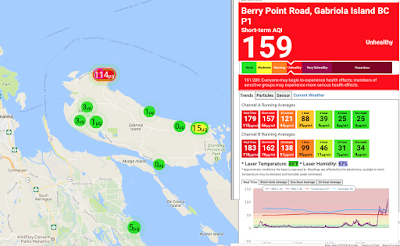At least forest fires eventually burn out
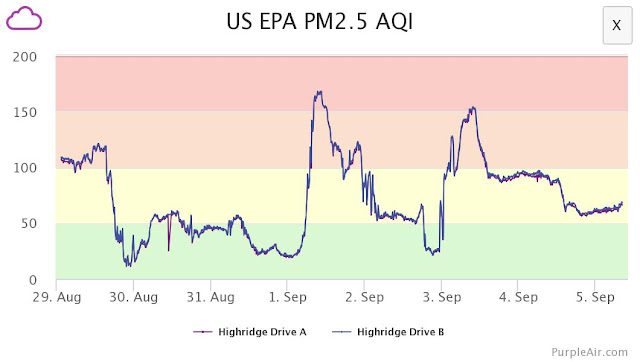
For those who experienced a Summer exposed to wood smoke from forest fires, the thought of yet another Fall, Winter, and Spring filled with locally-produced wood smoke from fireplaces and wood stoves is a horrifying one. Many are now exposed to particulate pollution for virtually 12 months of the year, and in rural and semi-rural communities these exposures are usually higher and almost never recorded by local, regional, or national governments. Our PurpleAir network shows the impacts of larger scale fire events as well as hyper-local impacts associated with residential wood burning practices. The pattern of smoke generated is clear and easy to interpret. Below is ambient air pollution from forest fires over the past week. This PurpleAir sensor is located in the Kamloops region. This pattern of smoke has a roller coaster appearance, and in this case PM2.5 reached around 165 on the US EPA AQI scale. Below is a screen capture from our network showing a range of readings from

